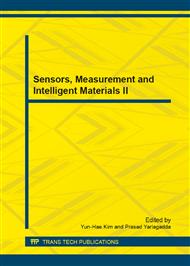[1]
Miller K A, Siscovick D S, Sheppard L, et al. Long-term exposure to air pollution and incidence of cardiovascular events in women, New England Journal of Medicine, 356 (2007)447-458.
DOI: 10.1056/nejmoa054409
Google Scholar
[2]
Künzli N, Mudway I S, Götschi T, et al. Comparison of oxidative properties, light absorbance, and total and elemental mass concentration of ambient PM2. 5 collected at 20 European sites, Environmental health perspectives, vol. 114, no. 5 (2006).
DOI: 10.1289/ehp.8584
Google Scholar
[3]
Peters A, Veronesi B, Calderón-Garcidueñas L, et al. Translocation and potential neurological effects of fine and ultrafine particles a critical update, Part Fibre Toxicol, 3 (2006) 1-13.
Google Scholar
[4]
López-Aparicio S, Smolík J, Mašková L, et al. Relationship of indoor and outdoor air pollutants in a naturally ventilated historical building envelope, Building and Environment, 46 (2011) 1460-1468.
DOI: 10.1016/j.buildenv.2011.01.013
Google Scholar
[5]
Molle R, Mazoué S, Géhin É, et al. Indoor-outdoor relationships of airborne particles and nitrogen dioxide inside Parisian buses, Atmospheric Environment, 69 (2013) 240-248.
DOI: 10.1016/j.atmosenv.2012.11.050
Google Scholar
[6]
Eeftens M, Tsai M Y, Ampe C, et al. Spatial variation of PM2. 5, PM10, PM2. 5 absorbance and PMcoarse concentrations between and within 20 European study areas and the relationship with NO2-Results of the ESCAPE project, Atmospheric Environment, 62 (2012).
DOI: 10.1016/j.atmosenv.2012.08.038
Google Scholar
[7]
MacNeill M., Wallace L. Kearney J. et al. Factors influencing variability in the infiltration of PM2. 5 mass and its components, Atmospheric Environment, 61(2012) 518-532.
DOI: 10.1016/j.atmosenv.2012.07.005
Google Scholar


